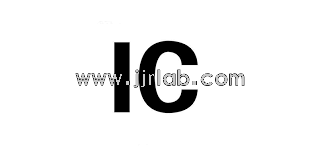
Amazon Toy & Kids Product Compliance Guide 2025
Planning to sell toys or other children's products on Amazon US? This guide covers the essential regULations, safety standards, certifications, labeling, and lab testing requirements sellers must know. It applies to:
a. Toys
b. Children’s jewelry
c. Educational supplies
d. Infant products like cribs, high chairs, bassinets
e. Kids’ furniture and apparel
*This article is for reference only and does not replace the latest policies on Amazon Seller Central.
1. General Compliance Requirements for Children’s Products
Definition:Products intended for use by children 12 years old or younger.
Amazon Requires Submission of:
a. Company name, Seller ID, and contact info
b. List of ASINs for the products being sold
c. A Children’s Product Certificate (CPC) for each ASIN
d. cpsia tracking labels and hazard warnings
e. Lab test reports from CPSC-accepted laboratories
Warning Label Requirements:
Sellers must clearly state any potential hazards (e.g., choking risks) and include appropriate warnings on both the product detail pageand product packaging.
2. Category-Specific Compliance Details
1. Toys
Applicable Standards:
astm f963-17 Toy Safety Standard
CPSIA limits on lead and phthalates
Examples:
Magnetic blocks, plush toys, invisible ink pens, fidget spinners
2. Children’s Jewelry
Applicable Standards:
astm f2923-14 Standard for Children’s Jewelry
Washington CSPA restrictions on cadmium and phthalates
Examples:
Bracelets, anklets, necklaces, rings, earrings
3. Educational Supplies
Applicable Standards:
CPSIA lead content limits
16 CFR 1500.50 (Simulated use & abuse testing)
CSPA phthalate restrictions
Examples:
Backpacks, lunch boxes, book covers, pencil cases
4. Child Restraint Systems (Car Seats, etc.)
Product Types:
Infant carriers, booster seats, forward/rear-facing seats
Applicable Standards:
ASTM F2050-19, astm f833-15, 49 CFR 571.213
CPSIA registration card and lead limits
5. Toddler Beds
Applicable Standards:
ASTM F1821 (incorporated into 16 CFR 1217)
Key Requirements:
CPSIA limits on lead and phthalates
CPSIA product registration card
6. Children’s Apparel with Drawstrings
Prohibited Items:
Tops with hood/neck drawstrings for sizes 2T–12
Compliance Standards:
ASTM F1816 (Drawstrings in Children’s Upper Outerwear)
16 CFR 1610 (Flammability of Clothing Textiles)
7. Bedside Sleepers
Applicable Standards:
ASTM F2906 (incorporated into 16 CFR 1222)
Requirements:
CPSIA lead and phthalate limits
CPSIA registration card
8. Children’s Sleepwear
Applicable Age Range:0 months to 14 years
Applicable Standards:
ASTM D6545, 16 CFR 1611 (Flammability)
Tight-fitting garments must carry “Not Flame Resistant” warnings
9. High Chairs
Applicable Standards:
astm f404 (incorporated into 16 CFR 1231)
CPSIA lead/phthalate limits and registration card
10. Cradles and Bassinets
Applicable Standards:
ASTM F2194 (incorporated into 16 CFR 1218)
CPSIA lead/phthalate limits and registration card
11. Children’s Helmets
Bicycle Helmets
Standards:
astm f1447, Snell B-90A / B-95, ASTM F1898
16 CFR 1203 (mandatory standard)
Snow/Ski/Skate Helmets
Standards:
ASTM F2040, Snell RS-98, SA Z263.1 (Canadian standard)
3. Additional Compliance Information
Amazon Compliance Team May Request:
a. CPC certificates, lab test reports, cpsia labels
b. Invoices, product images
Failure to provide these may result in product removal.
4. Lab Testing & Certification
Choose a CPSC-accepted lab, such as:
a. China JJR Lab(Recommended – up to 40% cost savings)
b. SGS
c. Intertek
d. QIMA
5. Product Packaging Requirements (for FBA Sellers)
a. Products with packaging larger than one square foot must be securely packed
b. Items for children under 4 years old using plastic bags must include choking hazardwarnings
c. Packaging must be sealed, durable, and clearly labeled
6. Restricted & Prohibited Products
Prohibited Examples:
a. Infant sleep positioners with pillows (banned by FDA)
b. Frameless car seats for children
c. Kids’ apparel with non-compliant drawstring designs
7. Hazardous Materials (Hazmat) Policy
If the product involves batteries, chemical kits, or painting tools, sellers must:
a. Submit a Safety Data Sheet (SDS)
b. Declare hazmat details in product listings
China JJR Laboffers reliable compliance testing and certification services. Compared to labs like SGS and TÜV, JJR can help clients save up to 40%in testing costs.
Email:hello@jjrlab.com
Write your message here and send it to us
 Amazon ISO/IEC 17025 UL Testing Service Laboratory
Amazon ISO/IEC 17025 UL Testing Service Laboratory
 How to get CE Certification for Lighting Products?
How to get CE Certification for Lighting Products?
 CE Certification Standards & Process for Elect
CE Certification Standards & Process for Elect
 Japan METI Registration & Japanese Agent Servi
Japan METI Registration & Japanese Agent Servi
 Temperature Shock Test (IEC 60068-2-14:2009)
Temperature Shock Test (IEC 60068-2-14:2009)
 Electromagnetic Compatibility (EMC) Testing Servic
Electromagnetic Compatibility (EMC) Testing Servic
 Canada ISED Certification (IC Certification) Analy
Canada ISED Certification (IC Certification) Analy
 CSA C22.2 No.42 Compliance Test Report for Amazon
CSA C22.2 No.42 Compliance Test Report for Amazon
Leave us a message
24-hour online customer service at any time to respond, so that you worry!




